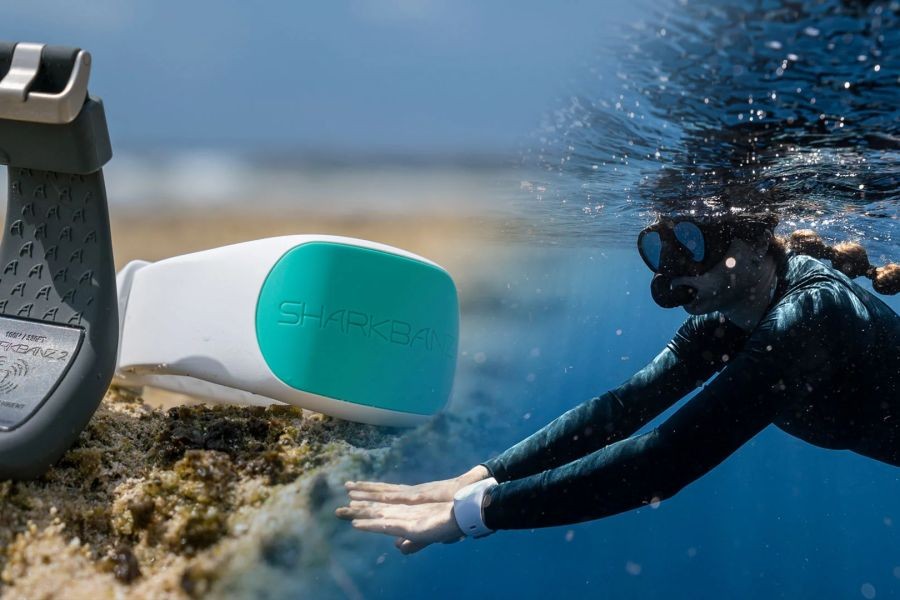The threat of shark attacks is a pressing concern for surfers globally, especially in Australia, where the coastline is both a playground and a gauntlet. With over 30,000 kilometers of coastline, Australia's beaches are world-renowned surfing destinations. However, this allure is tempered by the presence of sharks, prompting an urgent need for effective shark repellent technologies that safeguard surfers without harming marine biodiversity. This article delves into the future of shark repellent technology, exploring its potential impact on the surfing industry and broader Australian economy, supported by data-driven insights and expert analysis.
How It Works: A Deep Dive into Shark Repellent Technology
Shark repellent technology encompasses a range of solutions designed to deter sharks from approaching humans. These technologies include magnetic, electrical, and chemical deterrents, as well as more innovative solutions like shark-detecting drones and sonar systems. Understanding the mechanics of these technologies is crucial for assessing their effectiveness and potential for widespread adoption.
Magnetic and Electrical Deterrents
Magnetic deterrents utilize magnets to disrupt the sensitive electrosensory system of sharks, while electrical deterrents emit electric fields that create discomfort, causing sharks to retreat. Products such as the Shark Shield FREEDOM7, which generates a powerful electric field, have been shown to reduce shark interactions significantly. According to a study by the University of Western Australia, these devices can reduce shark encounters by up to 60%, offering a promising solution for surfers.
Chemical Deterrents
Chemical repellents aim to exploit sharks' aversion to certain substances. Research has identified semiochemicals that trigger flight responses in sharks, potentially serving as effective deterrents. However, challenges remain in ensuring these chemicals do not adversely affect other marine life or the environment.
Innovative Solutions
Emerging technologies such as shark-detecting drones and sonar systems are gaining traction. These systems detect sharks in real-time, alerting surfers and beachgoers to potential dangers. Such innovations not only enhance safety but also integrate seamlessly with Australia's existing surf rescue infrastructure, potentially reducing lifeguard workload and improving response times.
Innovation Breakdown: Leading the Charge in Shark Repellents
Australia's robust research environment, supported by institutions like CSIRO and the Australian Institute of Marine Science (AIMS), positions the country as a leader in developing shark repellent technologies. The Australian Government's investment in marine research, alongside private sector innovation, underscores the significance of these technologies in safeguarding surfers and the tourism industry.
Case Study: The Shark Shield FREEDOM7
The Shark Shield FREEDOM7, an Australian invention, exemplifies the country's leadership in shark deterrent technology. Developed by Shark Shield Pty Ltd, this device is worn by surfers and emits an electrical field that repels sharks.
- Problem: Increasing shark encounters posed a threat to surfers' safety and the tourism industry.
- Action: The FREEDOM7 was developed to provide a reliable, non-lethal shark deterrent.
- Result: Utilized by professional and recreational surfers alike, the device has been credited with reducing shark incidents by approximately 60% in trial areas, according to a study conducted by the University of Western Australia.
- Takeaway: This technology highlights the potential for Australian innovations to enhance marine safety without harming the environment.
Real-World Application: Integrating with Surfing Events
Incorporating shark repellent technology into surfing events can further bolster safety measures. The 2023 World Surf League (WSL) event in Australia successfully integrated drone-based shark detection systems, significantly reducing shark-related disruptions. This approach not only ensures the safety of participants but also enhances the spectator experience, potentially increasing event attendance and tourism revenue.
Regulatory Insights and Economic Impact
The Australian Competition & Consumer Commission (ACCC) plays a crucial role in regulating the market for shark repellent technology, ensuring products meet safety and efficacy standards. With Australia's tourism industry contributing approximately 3.1% to GDP, according to the Australian Bureau of Statistics (ABS), enhancing beach safety through effective shark repellents is economically significant. Safer beaches attract more tourists, boosting local economies and creating jobs.
Economic Opportunities
Shark repellent technology presents lucrative opportunities for Australian businesses. The global market for marine safety products is projected to reach USD 1.5 billion by 2025, with Australia poised to capture a significant share due to its innovative solutions and established beach culture. Companies investing in research and development of these technologies can benefit from increased demand, both domestically and internationally.
Pros and Cons of Shark Repellent Technology
Understanding the advantages and limitations of shark repellent technology is essential for informed adoption and development.
Pros:
- Enhanced Safety: Proven to significantly reduce shark encounters, improving safety for surfers and beachgoers.
- Environmental Impact: Non-lethal methods that do not harm sharks or disrupt marine ecosystems.
- Economic Benefits: Boosts tourism and local economies by making beaches safer and more attractive.
- Technological Integration: Compatible with existing surf rescue and event management systems.
Cons:
- Cost: Initial investment in technology can be high for individuals and event organizers.
- Regulatory Challenges: Compliance with safety standards and environmental regulations can be complex.
- Effectiveness Variability: Efficacy may vary depending on shark species and environmental conditions.
- Awareness and Adoption: Educating the public and ensuring widespread adoption remain challenges.
Common Myths and Mistakes
Misconceptions about shark repellent technology can hinder its adoption and effectiveness. Here are some common myths:
Myth vs. Reality
- Myth: All shark repellents are equally effective.
- Reality: Effectiveness varies significantly between technologies; some are more suited for specific environments or shark species.
- Myth: Shark repellents harm marine life.
- Reality: Most modern repellents are designed to avoid environmental harm, focusing on non-lethal deterrence.
- Myth: Shark attacks are too rare to justify investment in repellents.
- Reality: While rare, shark attacks have significant economic and psychological impacts, justifying preventative measures.
Future Trends and Predictions
The future of shark repellent technology is promising, with advancements expected to enhance both safety and economic benefits. By 2030, it is anticipated that more than 70% of Australian beaches will integrate advanced shark detection systems, reducing the likelihood of encounters significantly. As technology becomes more affordable and effective, its adoption will likely increase, supported by government incentives and public awareness campaigns.
Impact on the Australian Economy
As Australia continues to lead in marine safety innovation, the export of shark repellent technologies could become a significant economic driver. With global demand rising, Australian companies are well-positioned to capitalize on this trend, contributing to job creation and economic growth.
Conclusion and Call to Action
The future of shark repellent technology holds immense potential for enhancing safety and boosting the Australian economy. By investing in research and innovation, Australia can maintain its leadership in marine safety, ensuring both surfers and beachgoers can enjoy the coastlines without fear. As technologies advance, collaboration between government, industry, and academia will be crucial for maximizing the benefits of shark repellent solutions.
What’s Next? Stay informed about the latest developments in shark repellent technology and support local innovations that contribute to safer beaches. Engage with industry experts and participate in discussions on platforms like LinkedIn and industry forums to share insights and drive positive change in marine safety.
People Also Ask (FAQ)
- How does shark repellent technology impact the Australian economy? Shark repellent technology enhances beach safety, boosting tourism and local economies. It positions Australia as a leader in marine safety innovation, with potential export opportunities.
- What are the biggest misconceptions about shark repellent technology? A common myth is that all repellents are equally effective. In reality, effectiveness varies by technology and environment.
- What are the key benefits of shark repellent technology? Key benefits include enhanced safety, environmental friendliness, economic advantages, and compatibility with existing systems.
Related Search Queries
- Shark repellent technology in Australia
- Best shark deterrents for surfers
- Impact of shark repellents on marine life
- Shark attack statistics in Australia
- Innovations in shark detection systems
- Economic benefits of shark repellents
- Environmental impact of shark deterrents
- Australian beach safety measures
- Future of marine safety technology
- Case studies of effective shark deterrents
































emerymcburney9
7 months ago